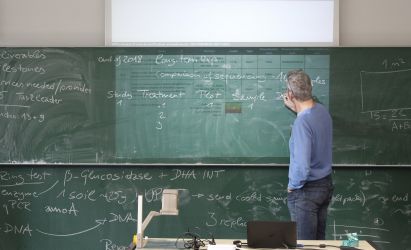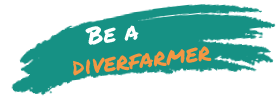The work days at the University of Trier have served to determine which analysis techniques the team will use
One of the main particularities of a project integrated by 25 actors, from eight different countries and from multiple disciplines is that of reaching common conclusions and establishing working methods through dialogue and debate. Diverfarming, in its task of drawing a new map for European agriculture based on crop diversification and sustainability, has managed to establish a common strategy.
 After the work days and debates held between January 18 and 20 in Trier (Germany), in Diverfarming conclusions were reached that will mark the processes of extraction and analysis of soil and plant samples.
After the work days and debates held between January 18 and 20 in Trier (Germany), in Diverfarming conclusions were reached that will mark the processes of extraction and analysis of soil and plant samples.
First, to define the best methodology and analysis platform for bacterial and fungal biodiversity of the soil, it was decided to use two long-term study cases, one from the Universidad Politécnica de Cartagena (UPCT) and another from the Council for Agricultural Research and Analysis of the Agrarian Economy (CREA) to sample soil in February. The use of two different platforms will enable the best way to proceed in all the project’s case studies to be decided.
Once this comparison is made, nine soil samples will be taken per crop type (the current crop on the farm and the diversification adopted) in each of the experimental lands that make up the project. The depth of these samples was a very debated issue, as each discipline (geology, genetics, biology, agronomy, ...) has different needs since the parameters they usually measure differ.
Despite the complications, it was established that samples would be taken at two depths for each diversification (0-10 cm and 10-30 cm) so that the results can be used to establish models that characterise the sustainability of the proposed systems.
When finding the best system to code these samples in a language that is common to all partners, the first step established was the submission of a list of the codifiable factors that these samples will have.
The debate among the multidisciplinary team opened the way to collaborations among partners with commitments such as making a video showing how to sample earthworms and another video with common mistakes in different techniques to determine different parameters, to help them from being repeated. This creates a network of shared knowledge around sustainable agriculture that will help to create more effective diversification systems.
All the parameters established in these work days will be compiled in an open-access manual or "handbook" that will be released in June this year. Its authors will be chosen by the leaders of each of the work packages involved in this task (work packages 3, 4 and 5).
All the topics discussed have always been approached from the perspective of sustainability and rural growth, which are two of the basic principles of Diverfarming.
These days have also served to present the latest company that has joined the project, Ekoboerderij from The Netherlands, and to know on the ground the characteristics of the experimental lands of the area, the vineyards of Dr. Frey.
Once the groundwork for soil sampling and analysis has been established, we can only wait for the publication of the handbook and the start of fieldwork in the first days of December this year.
Más información en This email address is being protected from spambots. You need JavaScript enabled to view it. // + 34 957 21 22 52










